Recent Articles
Popular Makes
Body Types
2018 Porsche Macan vs 2018 BMW X3: Which is Best?
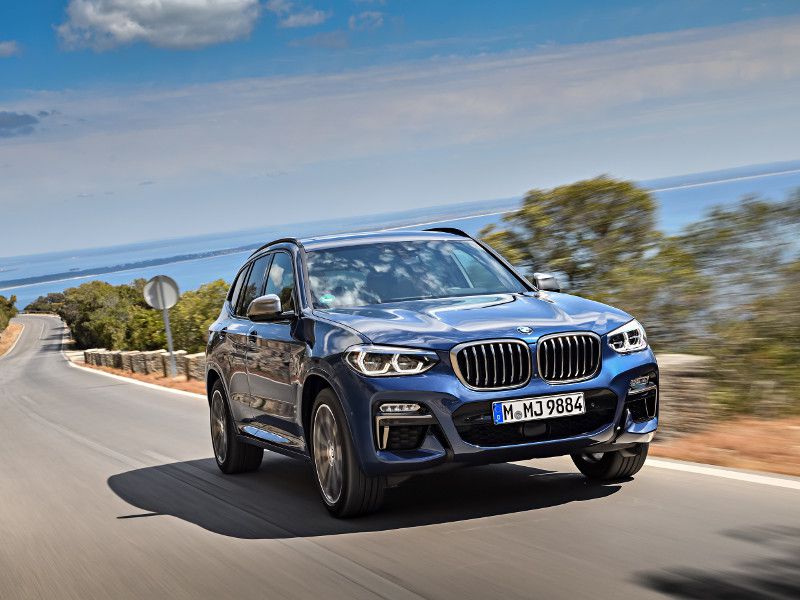
2018 BMW X3 M40i blue driving ・ Photo by BMW
The 2018 Porsche Macan and 2018 BMW X3 are both excellent premium compact crossovers. There might be some people buying them purely because of the prestige associated with these badges, but they each have an extra dimension — driving talent. If people want an unremarkable experience behind the wheel, they don’t need an X3 or a Macan.
The 2018 BMW X3 is an all-new generation for this model year, while this base Porsche Macan only came into being last year. Up until now, the Porsche has been the handling benchmark but now there’s some real competition. To find out which is best, we’ll have to break it down. Enjoy the journey, because that’s what both vehicles are all about.
Pricing
The 2018 BMW X3 xDrive30i starts at $43,600. There’s also a 355-hp X3 M40i from $55,495, but we’ll concentrate on the entry-level model.
The 2018 Porsche Macan is priced from $48,850, with all-wheel drive as standard. For those who want more spice, the 340-hp Macan S costs $56,450 before options.
Putting these figures in some context, the 2018 Lexus NX with all-wheel drive starts at around $38,000. Despite being pricey in the bigger scheme of things, the X3 is the least expensive of the two, so this first category goes to BMW.
BMW X3
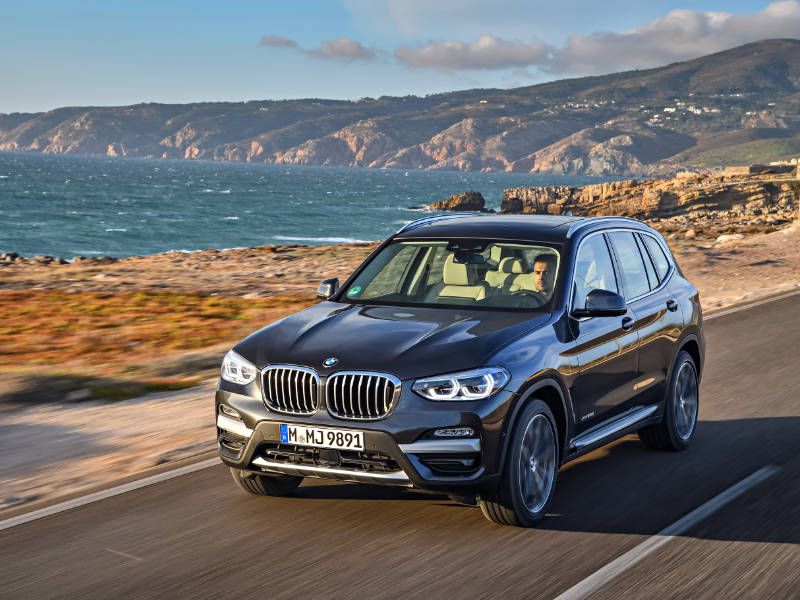
Photo by BMW
Equipment
Both vehicles have a rearview camera, 18-inch alloy wheels, all-wheel drive, tri-zone automatic climate control, parking sensors front and rear, and a power tailgate.
The BMW X3 also has selectable driving modes, LED fog lights, eight-way power-adjustable front seats with two-way power-adjustable bolstering and drivers-side memory, HD radio, 12-speaker audio system, and a 6.5-inch infotainment screen.
The Porsche Macan comes with lane departure warning, a seven-inch touchscreen, eight-way power-adjustable front seats, 10-speaker audio system, satellite/HD radio, and Apple CarPlay smartphone integration (optional in the X3, which also requires navigation, so it’s a pricey way to get it).
Neither has a clear edge, so it's a tie.
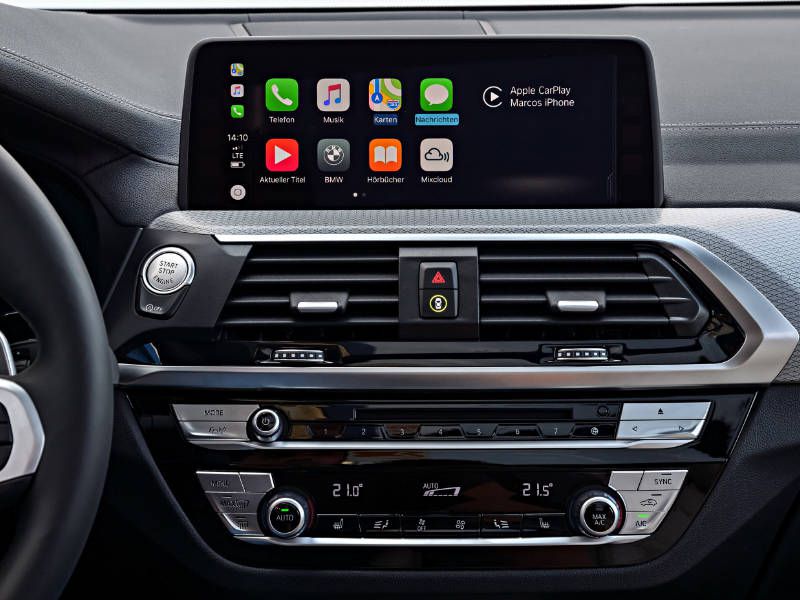
Photo by BMW
Options
This is where it gets dangerous. There are so many extras to swell the final cost. Both vehicles offer things like LED headlights with cornering illumination, 360-degree camera setups, larger alloy wheels, parking sensors front and rear, and audio system upgrades (Harmon Kardon in the X3; Bose or, if you want to go nuts Burmester, in the Macan).
The X3 also offers gesture control for the infotainment system, configurable 12.3-inch digital driver’s display, surround-view camera, and an adaptive suspension. The Macan has the option of a self-leveling rear air suspension.
The BMW wins this section because Porsche’s options are more expensive. For example, a panoramic sunroof in the X3 costs $1,350. In the Macan, it’s $1,670.
BMW X3
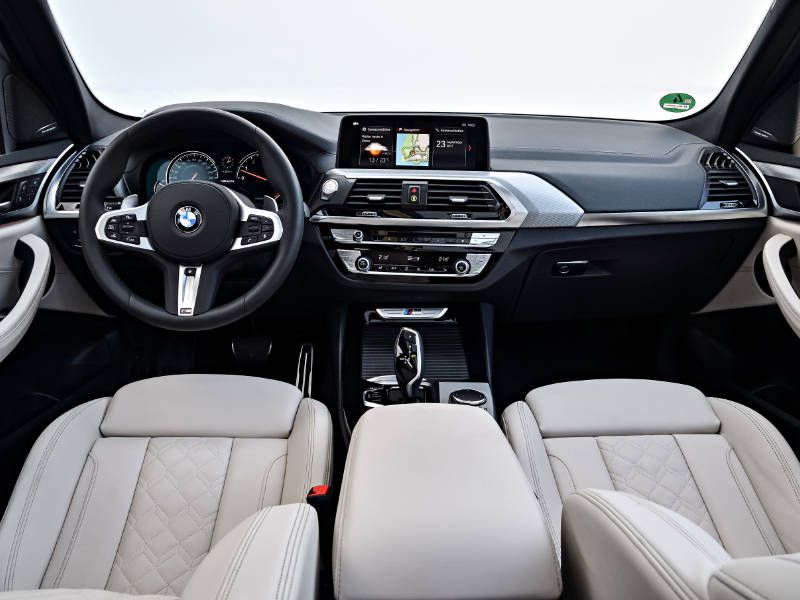
Photo by BMW
Comfort and Cargo
Neither contender leads the class for passenger space (look at the Jaguar F-Pace if that’s a priority), but the front seats in each vehicle are typically German. That means well-shaped and firmly supportive, resulting in long-term comfort and less fatigue after several hours behind the wheel.
However, we’re giving this entire category to the X3 due to space. Rear legroom is 36.4 inches, compared with the Macan’s 35.6 inches. Trunk space is 28.7 cubic feet, expanding to 62.7 cubic feet with the rear seats folded. The Macan only manages 17.7 and 53 cubic feet respectively. And despite having a better payload rating, 1,488 pounds to the X3’s 937 pounds, space is the more important factor.
BMW X3

Photo by BMW
Engines
The all-wheel-drive BMW X3 xDrive30i has a turbocharged 2.0-liter/four-cylinder engine making 248 hp and 258 lb-ft of torque. An eight-speed automatic is the only transmission offered.
The Macan also uses a turbocharged 2.0-liter/four-cylinder engine, yet enjoys a greater energy output: 252 hp and 273 lb-ft of torque. This goes to all four wheels via a seven-speed dual-clutch automated transmission (from the driver’s perspective, it’s operated like a conventional automatic).
Neither marque is particularly well renowned for its four-cylinder engines. This increasingly common setup is more of a needs-must than a must-have. But the more powerful Porsche takes this category.
Porsche Macan
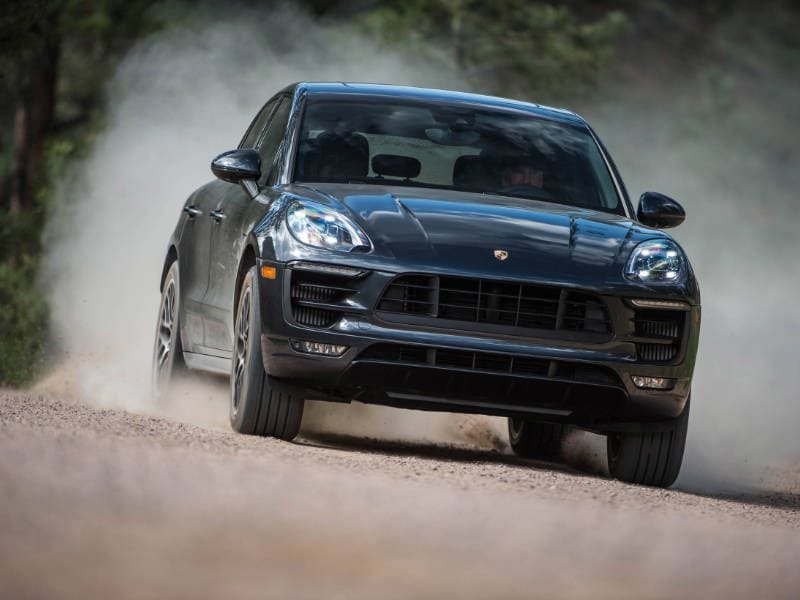
Photo by Porsche
Fuel Economy
The BMW X3 has automatic stop/start to save a little fuel when the car is at a standstill, Eco driving mode, active grille shutters for optimum aerodynamic efficiency, and even hybrid-like brake energy regeneration. No wonder the Environmental Protection Agency (EPA) estimates fuel consumption for the xDrive30i at an advantageous 22 mpg city/29 mpg highway/25 mpg combined.
The Porsche Macan also has automatic stop/start, plus a coasting mode, but it cannot beat the X3 in this respect. The EPA puts fuel use at 20/25/22 mpg.
BMW X3
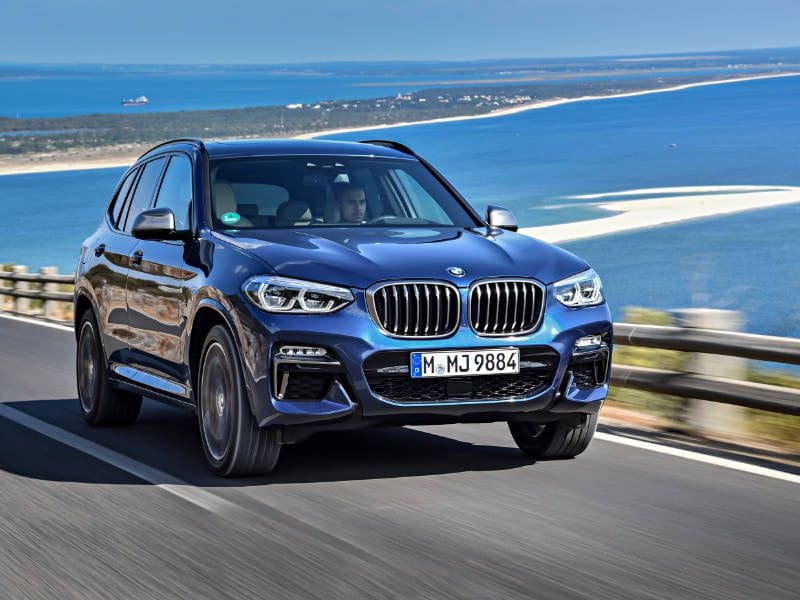
Photo by BMW
Performance
In both vehicles, power delivery is simultaneously punchy, smooth and predictable.
The BMW X3 sprints from standstill to 60 mph in six seconds dead, before hitting a top speed of 130 mph.
Even though it has marginally more muscle, the Porsche Macan is 0.3 of a second slower to 60 mph, but that can be improved to 0.1 if buyers choose the Sport Chrono package to gain a launch mode. Buyers may not think the extra $1,000 or so is worth it, although it does come with a nice dashboard clock in this package as well. Top speed is 142 mph, but who ever really hits the maximum speeds in their cars? It’s immediate acceleration that’s more important, so the X3 takes this section.
BMW X3
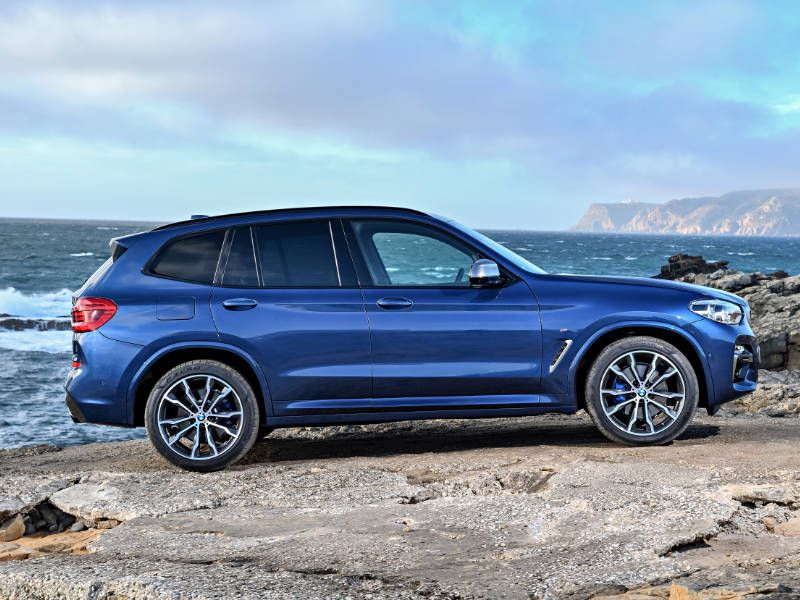
Photo by BMW
Handling
If there are two companies that truly understand how enthusiast vehicles should move, respond, behave and inform, they’re BMW and Porsche. Both have been successful in motorsports. BMW has nine championships in the German Touring Cars (DTM) series and won the 24 Hours of Le Mans once. Porsche has won Le Mans 19 times, more than anyone else. That’s a lot of expertise to trickle down into two of the finest-handling crossovers.
Drive the X3 first and it’s hard to imagine anything better this side of a sports car. It’s stable, supple, and precise. Jump in the Macan and it’s apparent Porsche’s engineers could imagine something better and then created it. There’s a flow, an extra degree of confidence.
Porsche Macan
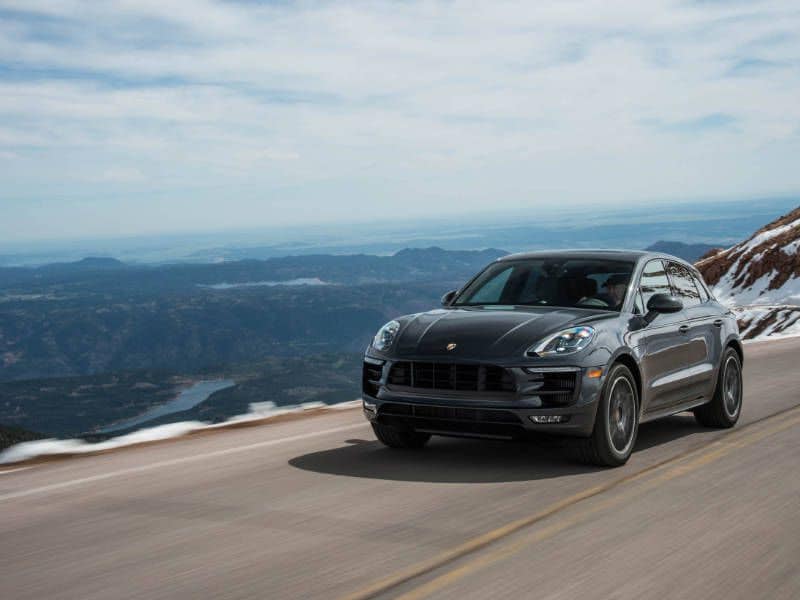
Photo by Porsche
Exterior and Interior Design
“Sleek” is possibly the last word that comes to mind when looking at the BMW X3 and probably the first when encountering the Porsche Macan. It could be argued that BMW’s approach to crossover design has been a bit of a yawn, whereas Porsche has managed to endow the Macan with some well-proportioned sports-car attitude.
It’s a similar story inside. The Macan’s ignition key is on the left. It’s a traditional Porsche trait that celebrates the marque’s history at Le Mans, so every time you fire up a Porsche, you’re reminded of that motorsport heritage. The X3 is smart and business-like, but the Macan has the greater sense of occasion.
Porsche Macan
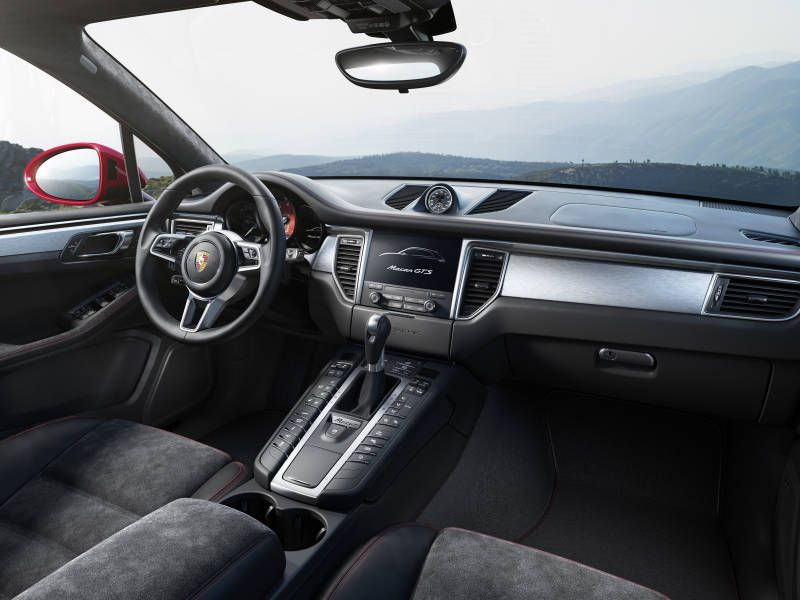
Photo by Porsche
Safety
The BMW X3’s standard safety features include forward collision mitigation with pedestrian detection and driver fatigue monitoring. More advanced functions like adaptive cruise control, blind spot monitoring and lane departure warning are optional. With those extras installed, the Insurance Institute for Highway Safety makes it a Top Safety Pick Plus.
The Macan hasn’t been tested in the United States but took the full five stars in European crash tests. Forward collision mitigation is optional.
The X3’s array is slightly better, so this section is a slim victory for BMW.
BMW X3
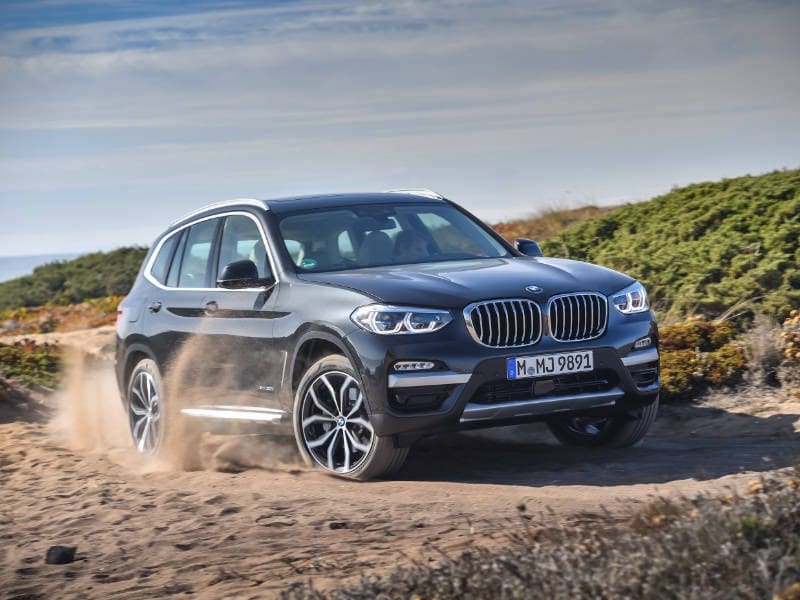
Photo by BMW